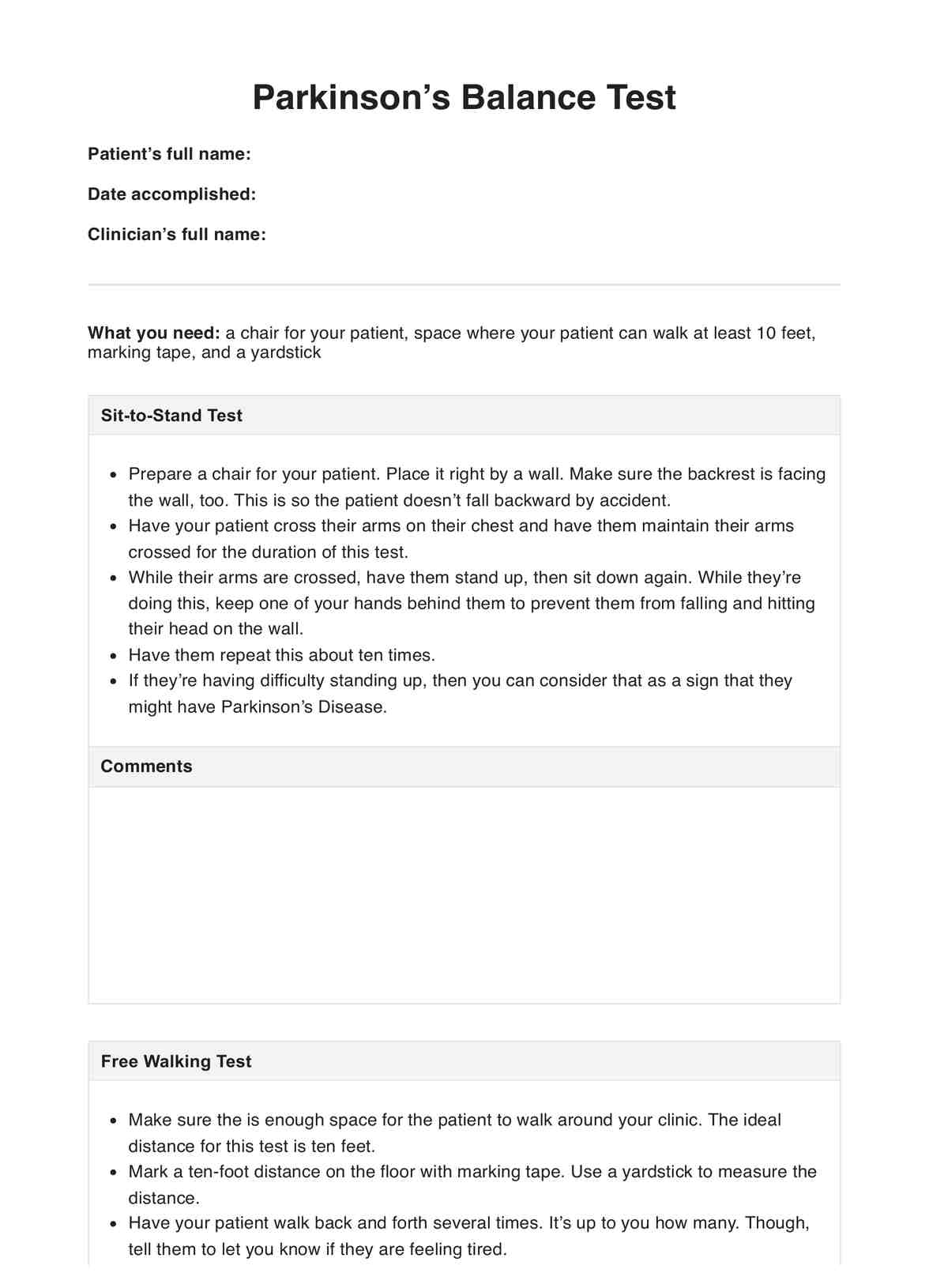No. The Parkinson’s Balance Test only checks if the patient has abnormalities with their gait and balance. It doesn’t check for other symptoms, so it won’t give you the full picture of the patient. Also, just because a person has gait and balance problems, it doesn’t mean they result from Parkinson’s Disease. They might be old or have suffered an injury that caused the problems.

Parkinson’s Balance Test
If a person has Parkinson’s Disease, it may impact their postural reflexes and, in turn, their balance and gait. Conduct this test to check on your patient and determine what you can do to help manage the disease.
Parkinson’s Balance Test Template
Commonly asked questions
You should conduct tests that check for Bradykinesia, rigidity, and tremors. It’s best to do these before conducting scans and neurological tests.
Somewhat. Patients might fall depending on how badly Parkinson’s Disease has affected them. That’s why part of the instructions is for the healthcare professional to be always beside the patient to provide support and prevent them from falling if they lose their balance.
EHR and practice management software
Get started for free
*No credit card required
Free
$0/usd
Unlimited clients
Telehealth
1GB of storage
Client portal text
Automated billing and online payments











